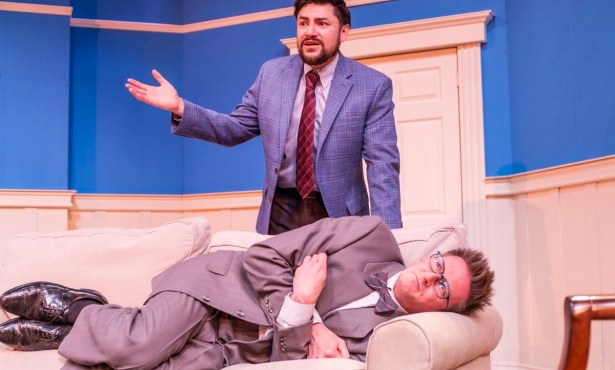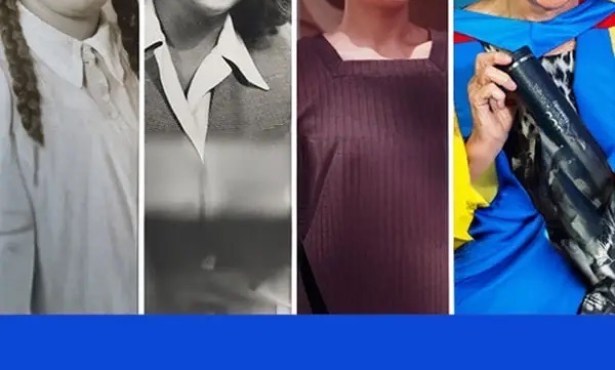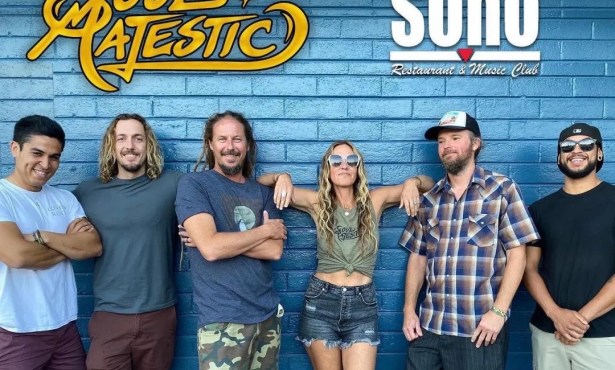Actor Rich Hoag Remembers
One of Santa Barbara’s Best Actors Looks Back on Five Decades

In 1958, I was 11 years old and wanted to be a bugler. Winning the coveted silver bugle at the annual Boy Scout Court of Honor was my dream, and I thought learning to play would be a piece of cake. There weren’t any valves to depress, so how hard could it be? You just put the horn to your lips and blow.
Well, not exactly. At the time, bugle teachers were in short supply, so I switched my musical focus to the trumpet, taking lessons at Bennett Music Company on State Street. For three years, I marched in Company C of Bennett’s Crusaders Military Band, arrayed in a spiffy uniform, but playing an instrument I loathed — those valves drove me nuts. When I was reassigned to another company, the bandleader, Bonnie Langley, had an idea. She suggested I carry the American flag instead. And she was right — whenever I carried Old Glory instead of the trumpet, the brass sounded great.

Around that time, I saw a Children’s Theatre production of Little Black Sambo at Santa Barbara Junior High (now home to The Marjorie Luke Theatre). I sat stunned and amazed as six actors dressed as Bengal tigers melted into butter on stage. How’d they do that? I wondered. There and then I got hooked on the magic of theater. Theater, unlike sports or academics, was immediate and could be anything I wanted it to be. I was hooked.
My earliest memory was standing (not sitting) at my seat at the S.B. Junior High School auditorium, watching an entire set completely disappear into the fly in The Elves and the Shoemaker. At that time, Children’s Theatre was helmed by Tom and Virginia Faunce, and it flourished for many years as a company of adult actors performing children’s classics. Tom remained the theater tech at Lotte Lehmann Hall until his retirement.
In the late 1950s, the Repertory Theater operated across from the Arlington in a converted church, and many Santa Barbara-based professionals established roots there, including Andy Romano, Bradford Dillman, and brothers Guy and Dean Stockwell. Every year the company performed a musical revue called Slings and Arrows, poking fun at local politics and other news of the day. Its star performer was Sally Grafton, a pretty comedic actress whom I fell hopelessly in love with. I was 10 years old.
In the mid 1960s, the Park Theatre was founded in a tiny 90-seat house operated by singer and vocal coach Sharon Currier. At 18, and just out of high school, I won the part of the virgin juvenile in A Funny Thing Happened on the Way to the Forum, a role I hated, but the musical played five nights a week all summer long. The Park (at State and Ortega) had a company of wonderful actors that included John “Red” Fox, Gordon Chavez, Rod Roeser, Alis Clausen, Wayne Bryan, Chris Karys, Art Lincoln, Paula Byron, June Andron, and Tallant Smith, just to name a few. Smith, who later taught drama at Dos Pueblos High, wrote his master’s thesis on The History of the Theatre in Santa Barbara: 1769-1894, a superbly researched and detailed narrative going back more than a hundred years.
In the early ’60s, many talented performers came out of Youth Theatre Productions (YTP), a summer musical theatre program established by area high school teachers Jack Nakano, June Lane, Bill Thatcher, and Irwin Maguire. These were big musicals with huge casts, and kids from all over the state came to audition. Many of them went on to make their mark in entertainment and related fields: Michael Richardson, Artis Martin, Randy Mantooth, Anthony Miratti, Howard McGillin, Kathryn Dougher, Tim and Joe Bottoms, Rod Lathim, Ted Gekis, Sam Tsoutsouvas, John Smith, Brad Hall, Eduardo Villa, Ted Dolas, Erin Graffy, Jerry Fleck, Jim Skaggs, Clark Sayre, Pam Dillman, Gary Goddard, Tony Christopher, and a skinny young piano player named David Potter.
I was lucky to be cast in YTP’s The Music Man in 1963 with Bill Black in the lead role. Years later I was cast in 1776 with James O’Neil in the lead. Jim and I became close friends and have remained so ever since. He later married Karyl Lynn Burns, another exceptional talent, and together they are the driving forces behind the Rubicon Theatre in Ventura.

At Bishop High School in the ’60s, we performed an annual musical at the Lobero. In my junior year, the Bishop nuns brazenly produced The Sound of Music before it was released to amateur rights (calling it The Trapp Family Singers), and Jack Nakano, artistic director for YTP, wasn’t too happy about it. Nakano had planned to produce it that following summer but was outfoxed. He just couldn’t bring himself to rat on the saintly Women in Black and years later said to me, “How often do a bunch of nuns get to produce a Broadway musical about a bunch of nuns?”
Dr. Frank Fowler founded the Alhecama Theatre, Santa Barbara’s first community theater, in the late ’40s, supported mostly by an elderly, white-haired audience whom we lovingly called “queue tips.” When Fowler retired in 1970, Dr. Pope Freeman came to Santa Barbara, and things changed rapidly for the better. We knew this to be true because the audience’s hair got progressively darker. While doing three plays and a musical each year at the Lobero, Pope also initiated the Alhecama Alternative Theater, directing smaller plays by Edward Albee, Harold Pinter, and other contemporary playwrights, plays that didn’t appeal to conservative audiences. At the Lobero, he directed large-scale productions like King Lear with guest artist Ford Rainey.
Musician David Potter formed Curtain-Up Productions in the ’70s. We produced full-blown musicals in various venues, including Oklahoma! at the Santa Barbara Bowl starring Eric Parce, Kathryn Dougher, and Rick Mokler (yes, that Rick Mokler). It was a risky venture, but it paid off for me personally. I met a pretty girl named Ruth Carlisle, who was playing French horn in David’s orchestra, and a year later we were married. Ruth and our children, Bobby and Holly, are and remain the light of my life.
In the late ’70s, I found myself teaching performing arts at San Marcos High and was fortunate to have some great performers: Eric Stoltz, Anthony Edwards, Robert DeLapp, Maria Rocha, Jill Carroll, and Kathy Ireland. Working closely with the drama teacher, Marge Luke, was a joy, as well. Marge could do it all: lighting, directing, costuming, and a whole lot of mothering. It’s more than fitting that we’ve named a beautiful theater in her memory.
My two best actors at San Marcos were Stoltz and Edwards. Unfortunately for me, both had become “hot properties” in Hollywood and were rarely around. Eric, in fact, was working so much down south that he couldn’t commit to a major role at school. But, even though he was already playing major roles in film and television, Eric would come home to be in the chorus of the school musical. I admired him greatly for that.

The Garvin Theatre at City College opened in 1977, and I was cast in Cabaret, the very first production there, directed by Max Whittaker. I played a cross-dressing cabaret entertainer, dancing in three-inch heels, hot pants, and fishnet stockings. Over the years, SBCC Theatre Group became my theatrical family, and I can say nothing but good things about them, true professionals all: Tom Garey, Mary Gibson, Pat Frank, Katie Laris, Mokler, and Pam Lasker.
So here it is 50 years later, and I never did figure out how the tigers melted. Likewise, I never learned to play the bugle, and Sally Grafton didn’t wait for me to grow up. Nevertheless, I’ve been blessed. Theaters have come and gone in Santa Barbara, but exceptional artistry remains the norm. Go see a play this weekend. Or better yet, audition for one



